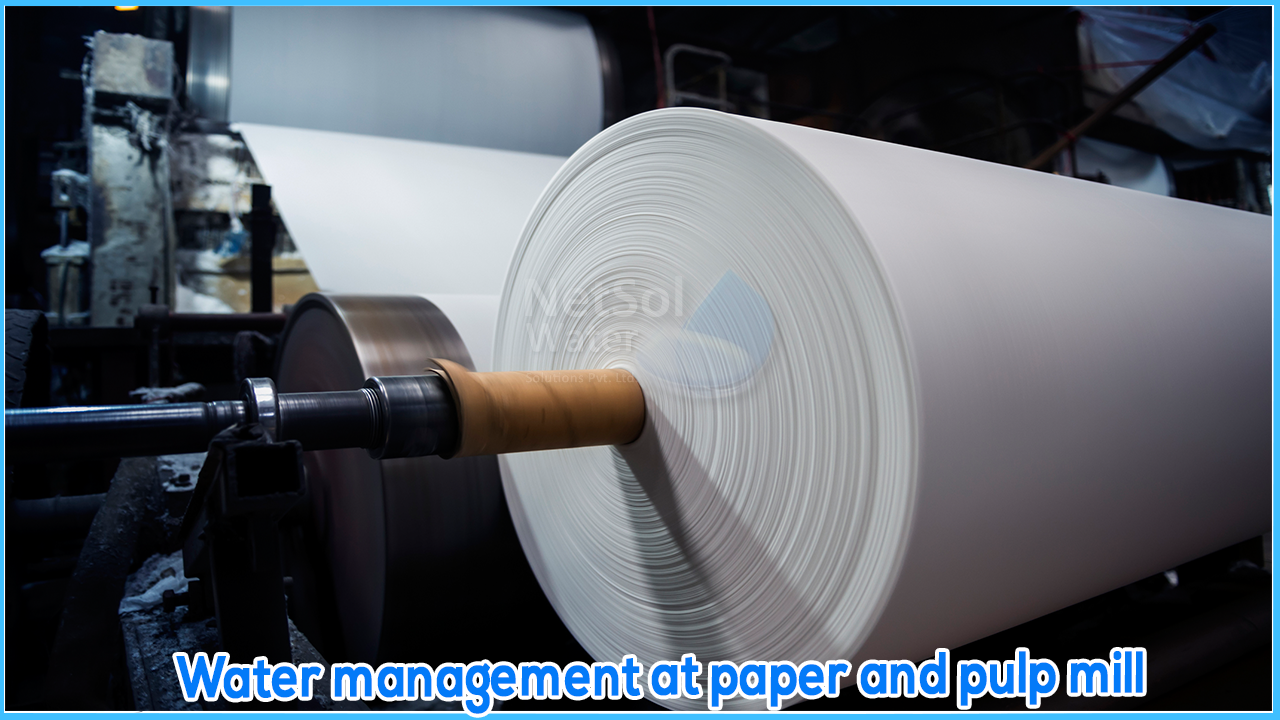A cutting-edge wastewater treatment system for a pulp and paper mill is being tested and designed by NETSOL WATER Improved sedimentation (using coagulant and flocculent), lagoon aeration, sand filtering, and discharge are all part of the current system. The client wants to reuse treated water since makeup water is expensive in this arid region, and a supply of high-quality boiler feed water is needed for a planned cogeneration facility. To acquire high-quality water for reuse, the High Efficiency Reverse Osmosis (HERO) technology can be employed.
WATER MANAGEMENT IN PAPER, PULP AND BOARD MILLS
This good practise guide addresses a number of difficulties that paper and board mill operators encounter when looking to identify and implement process improvements, including water and chemical usage reduction, as well as wastewater and effluent expenses. The paper sector is a large water user, and it is under increasing pressure to improve its water efficiency. This best practise guide is designed to assist businesses in evaluating and improving their water management.
IMPROVED WATER MANAGEMENT
According to the Environmental Performance Guide Water Use in Paper and Board Manufacture, there are significant differences in water consumption both within and across the major paper industry sectors. Adopting best practises in this area is likely to result in significant cost savings for most businesses, allowing them to improve their competitive position. Other advantages of better water management include:
1) increased supply security – a major concern for mills in drought-stricken areas; and
2) improved relationships with regulators, employees, and the general public through the demonstration of sustainable water usage policies.
WATER USE AUDITS
Any company aiming to improve its water management must first examine its current performance by establishing water balances or conducting a thorough water audit.The corporation should consider the richness of experience that currently exists among its employees, as well as any limits imposed by either plant or product, when setting effective water consumption targets. Modelling approaches can be used to define targets when appropriate, and corporations should consider conducting trials before making large-scale modifications to plant operations.
STEPS THAT CAN BE TAKEN TO BE REDUCE PLANT WATER CONSUMPTION
1. better overall management, design stage procedures (new plant/equipment)
2. low-cost improvements, such as hose minimisation, production scheduling, leak detection and repair;
3. process modifications, such as shower water optimization and cooling water reuse;
4. process redesign, such as improving the quality and management of white water so that more can be recycled;
total system closure with zero liquid effluents.




